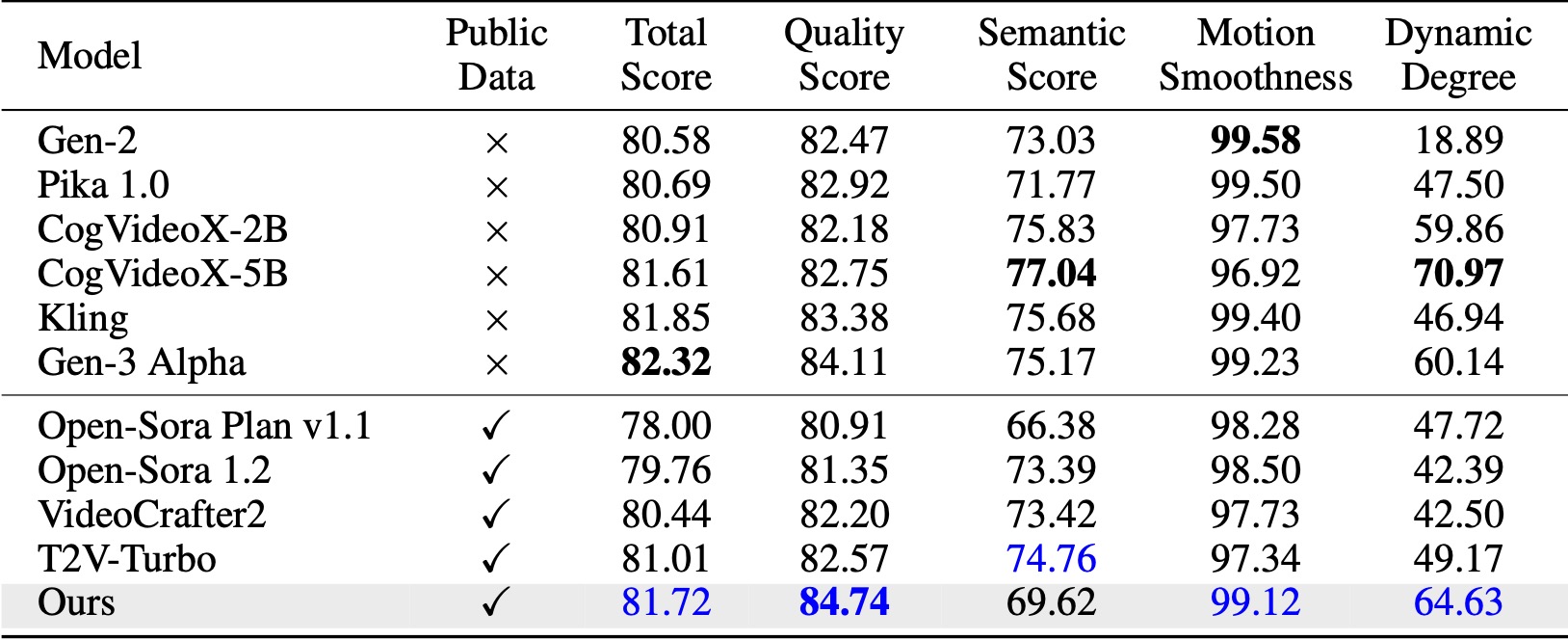Spaces:
Runtime error
A newer version of the Gradio SDK is available:
5.7.1
title: Pyramid Flow
sdk: gradio
emoji: ⚱️
sdk_version: 5.0.1
suggested_hardware: l40sx1
This is the official repository for Pyramid Flow, a training-efficient Autoregressive Video Generation method based on Flow Matching. By training only on open-source datasets, it can generate high-quality 10-second videos at 768p resolution and 24 FPS, and naturally supports image-to-video generation.
| 10s, 768p, 24fps | 5s, 768p, 24fps | Image-to-video |
|---|---|---|
News
COMING SOON⚡️⚡️⚡️ Training code for both the Video VAE and DiT; New model checkpoints trained from scratch.We are training Pyramid Flow from scratch to fix human structure issues related to the currently adopted SD3 initialization and hope to release it in the next few days.
2024.10.10🚀🚀🚀 We release the technical report, project page and model checkpoint of Pyramid Flow.
Introduction
Existing video diffusion models operate at full resolution, spending a lot of computation on very noisy latents. By contrast, our method harnesses the flexibility of flow matching (Lipman et al., 2023; Liu et al., 2023; Albergo & Vanden-Eijnden, 2023) to interpolate between latents of different resolutions and noise levels, allowing for simultaneous generation and decompression of visual content with better computational efficiency. The entire framework is end-to-end optimized with a single DiT (Peebles & Xie, 2023), generating high-quality 10-second videos at 768p resolution and 24 FPS within 20.7k A100 GPU training hours.
Usage
You can directly download the model from Huggingface. We provide both model checkpoints for 768p and 384p video generation. The 384p checkpoint supports 5-second video generation at 24FPS, while the 768p checkpoint supports up to 10-second video generation at 24FPS.
from huggingface_hub import snapshot_download
model_path = 'PATH' # The local directory to save downloaded checkpoint
snapshot_download("rain1011/pyramid-flow-sd3", local_dir=model_path, local_dir_use_symlinks=False, repo_type='model')
To use our model, please follow the inference code in video_generation_demo.ipynb at this link. We further simplify it into the following two-step procedure. First, load the downloaded model:
import torch
from PIL import Image
from pyramid_dit import PyramidDiTForVideoGeneration
from diffusers.utils import load_image, export_to_video
torch.cuda.set_device(0)
model_dtype, torch_dtype = 'bf16', torch.bfloat16 # Use bf16, fp16 or fp32
model = PyramidDiTForVideoGeneration(
'PATH', # The downloaded checkpoint dir
model_dtype,
model_variant='diffusion_transformer_768p', # 'diffusion_transformer_384p'
)
model.vae.to("cuda")
model.dit.to("cuda")
model.text_encoder.to("cuda")
model.vae.enable_tiling()
Then, you can try text-to-video generation on your own prompts:
prompt = "A movie trailer featuring the adventures of the 30 year old space man wearing a red wool knitted motorcycle helmet, blue sky, salt desert, cinematic style, shot on 35mm film, vivid colors"
with torch.no_grad(), torch.cuda.amp.autocast(enabled=True, dtype=torch_dtype):
frames = model.generate(
prompt=prompt,
num_inference_steps=[20, 20, 20],
video_num_inference_steps=[10, 10, 10],
height=768,
width=1280,
temp=16, # temp=16: 5s, temp=31: 10s
guidance_scale=9.0, # The guidance for the first frame
video_guidance_scale=5.0, # The guidance for the other video latent
output_type="pil",
save_memory=True, # If you have enough GPU memory, set it to `False` to improve vae decoding speed
)
export_to_video(frames, "./text_to_video_sample.mp4", fps=24)
As an autoregressive model, our model also supports (text conditioned) image-to-video generation:
image = Image.open('assets/the_great_wall.jpg').convert("RGB").resize((1280, 768))
prompt = "FPV flying over the Great Wall"
with torch.no_grad(), torch.cuda.amp.autocast(enabled=True, dtype=torch_dtype):
frames = model.generate_i2v(
prompt=prompt,
input_image=image,
num_inference_steps=[10, 10, 10],
temp=16,
video_guidance_scale=4.0,
output_type="pil",
save_memory=True, # If you have enough GPU memory, set it to `False` to improve vae decoding speed
)
export_to_video(frames, "./image_to_video_sample.mp4", fps=24)
Usage tips:
- The
guidance_scaleparameter controls the visual quality. We suggest using a guidance within [7, 9] for the 768p checkpoint during text-to-video generation, and 7 for the 384p checkpoint. - The
video_guidance_scaleparameter controls the motion. A larger value increases the dynamic degree and mitigates the autoregressive generation degradation, while a smaller value stabilizes the video. - For 10-second video generation, we recommend using a guidance scale of 7 and a video guidance scale of 5.
Gallery
The following video examples are generated at 5s, 768p, 24fps. For more results, please visit our project page.
Comparison
On VBench (Huang et al., 2024), our method surpasses all the compared open-source baselines. Even with only public video data, it achieves comparable performance to commercial models like Kling (Kuaishou, 2024) and Gen-3 Alpha (Runway, 2024), especially in the quality score (84.74 vs. 84.11 of Gen-3) and motion smoothness.
We conduct an additional user study with 20+ participants. As can be seen, our method is preferred over open-source models such as Open-Sora and CogVideoX-2B especially in terms of motion smoothness.
Acknowledgement
We are grateful for the following awesome projects when implementing Pyramid Flow:
- SD3 Medium and Flux 1.0: State-of-the-art image generation models based on flow matching.
- Diffusion Forcing and GameNGen: Next-token prediction meets full-sequence diffusion.
- WebVid-10M, OpenVid-1M and Open-Sora Plan: Large-scale datasets for text-to-video generation.
- CogVideoX: An open-source text-to-video generation model that shares many training details.
- Video-LLaMA2: An open-source video LLM for our video recaptioning.
Citation
Consider giving this repository a star and cite Pyramid Flow in your publications if it helps your research.
@article{jin2024pyramidal,
title={Pyramidal Flow Matching for Efficient Video Generative Modeling},
author={Jin, Yang and Sun, Zhicheng and Li, Ningyuan and Xu, Kun and Xu, Kun and Jiang, Hao and Zhuang, Nan and Huang, Quzhe and Song, Yang and Mu, Yadong and Lin, Zhouchen},
jounal={arXiv preprint arXiv:2410.05954},
year={2024}
}


